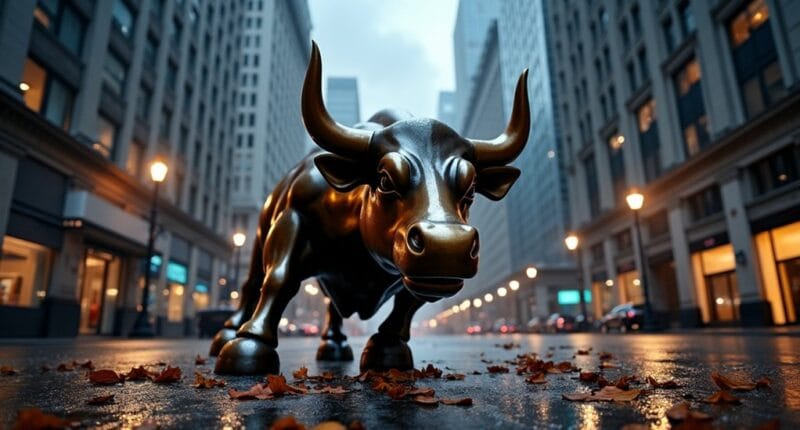Wall Street’s safe-haven playbook is getting shredded as U.S. Treasuries face an unprecedented exodus of foreign investors. Despite rising yields, Asian and European buyers are backing away, forcing a fundamental rethink of “risk-free” investments. The Federal Reserve’s balancing act between inflation control and debt market stability isn’t helping. With recession odds climbing to 35% and Goldman Sachs cutting its S&P target, traditional safety nets are unraveling. The market’s next chapter promises more surprises.

Uncertainty has taken root on Wall Street, and it’s shaking the very foundations of what investors once considered safe. U.S. Treasuries, those supposedly bulletproof government IOUs, are losing their shine faster than last year’s crypto promises. The numbers tell a brutal story: foreign investors are heading for the exits, and they’re not being subtle about it.
Goldman Sachs just slashed their S&P 500 target to 5,700, and it’s not because they’re feeling optimistic. With recession odds jumping to 35% and import tariffs hitting a jaw-dropping 18%, the economic picture looks about as pretty as a Wall Street trader’s desk after a market crash. Oppenheimer sees a brighter future with their S&P target of 7,100.
Market sentiment sours as Goldman cuts targets, with recession fears and soaring tariffs painting a grim picture for investors.
The global shift is stunning. Asian and European investors, once reliable buyers of American debt, are now giving U.S. Treasuries the cold shoulder. Even rising yields can’t lure them back – they’re too worried about the dollar’s muscle turning to mush. Statistical arbitrage algorithms are working overtime to detect pricing patterns across global markets.
Meanwhile, emerging markets are playing hard to get, preferring their regional bonds instead. Talk about a popularity contest gone wrong. The last time markets saw this much instability, it triggered a Great Recession that devastated American households.
Wall Street’s finest are scrambling to find new safe havens. Precious metals are getting fresh looks, and infrastructure investments are suddenly the new cool kids on the block. Even cryptocurrencies are getting nods from suits who used to mock them. Private credit markets are expanding faster than a trader’s expense account during bonus season.
The Federal Reserve is caught in an impossible dance, trying to tame inflation while keeping the debt market from having a complete meltdown. Machine learning algorithms are working overtime to assess risks, while traditional portfolio models are getting tossed out like yesterday’s news. The 60/40 split? That’s so 2020.
The implications stretch far beyond trading floors. The dollar’s status as global reserve currency is wobbling, trade spats are intensifying, and public debt concerns are keeping everyone up at night.
One thing’s clear: Wall Street’s definition of “safe” isn’t what it used to be. And maybe that’s not such a bad thing.





